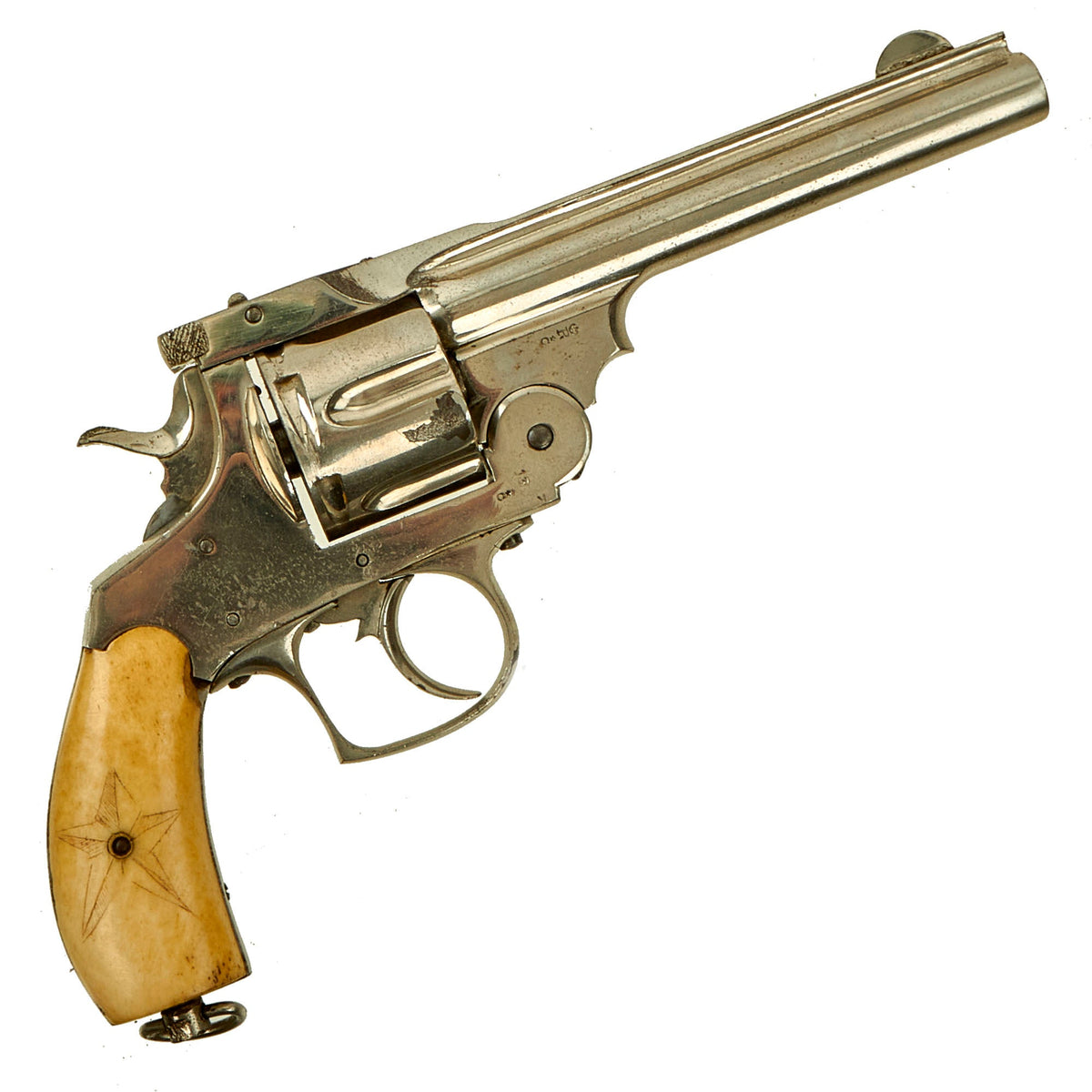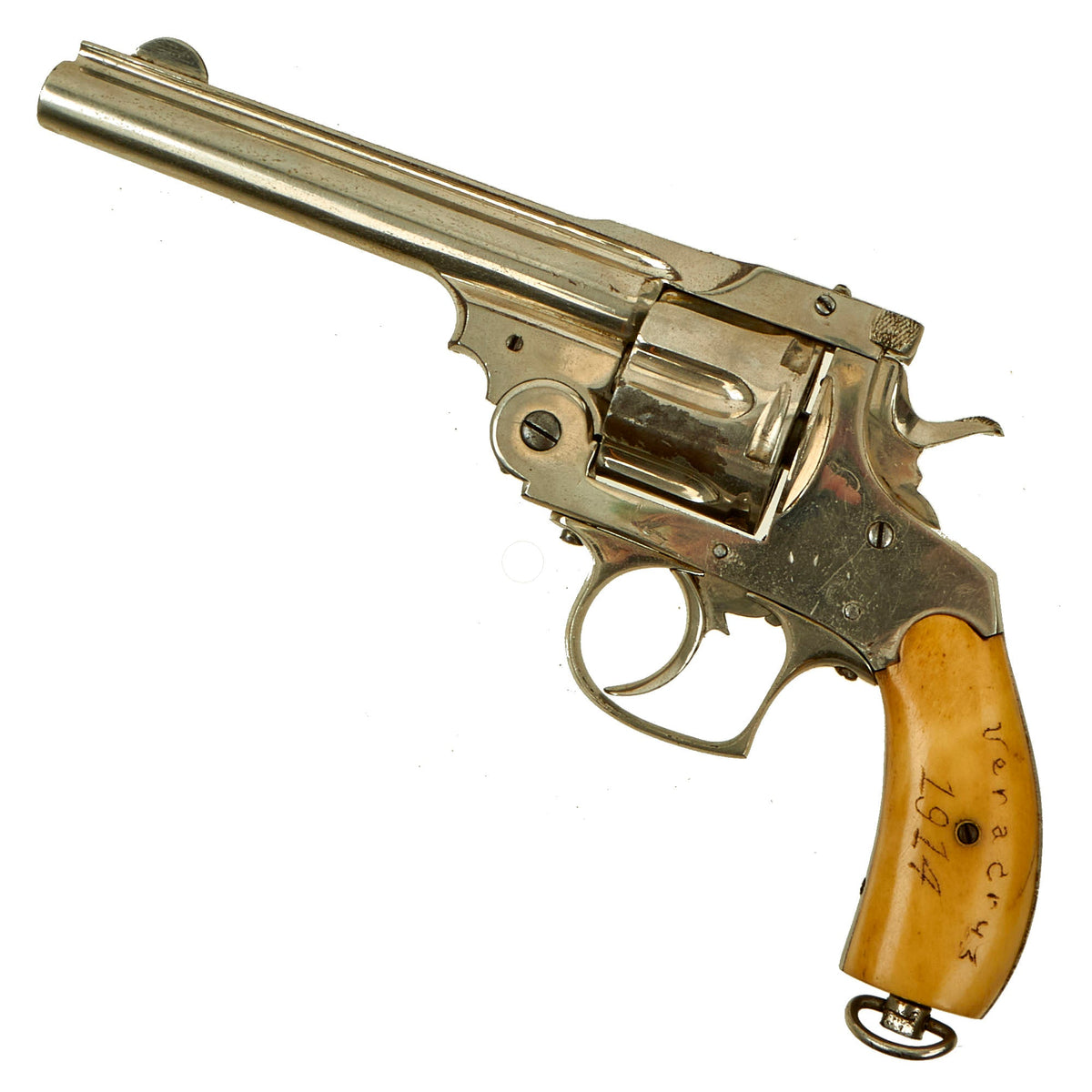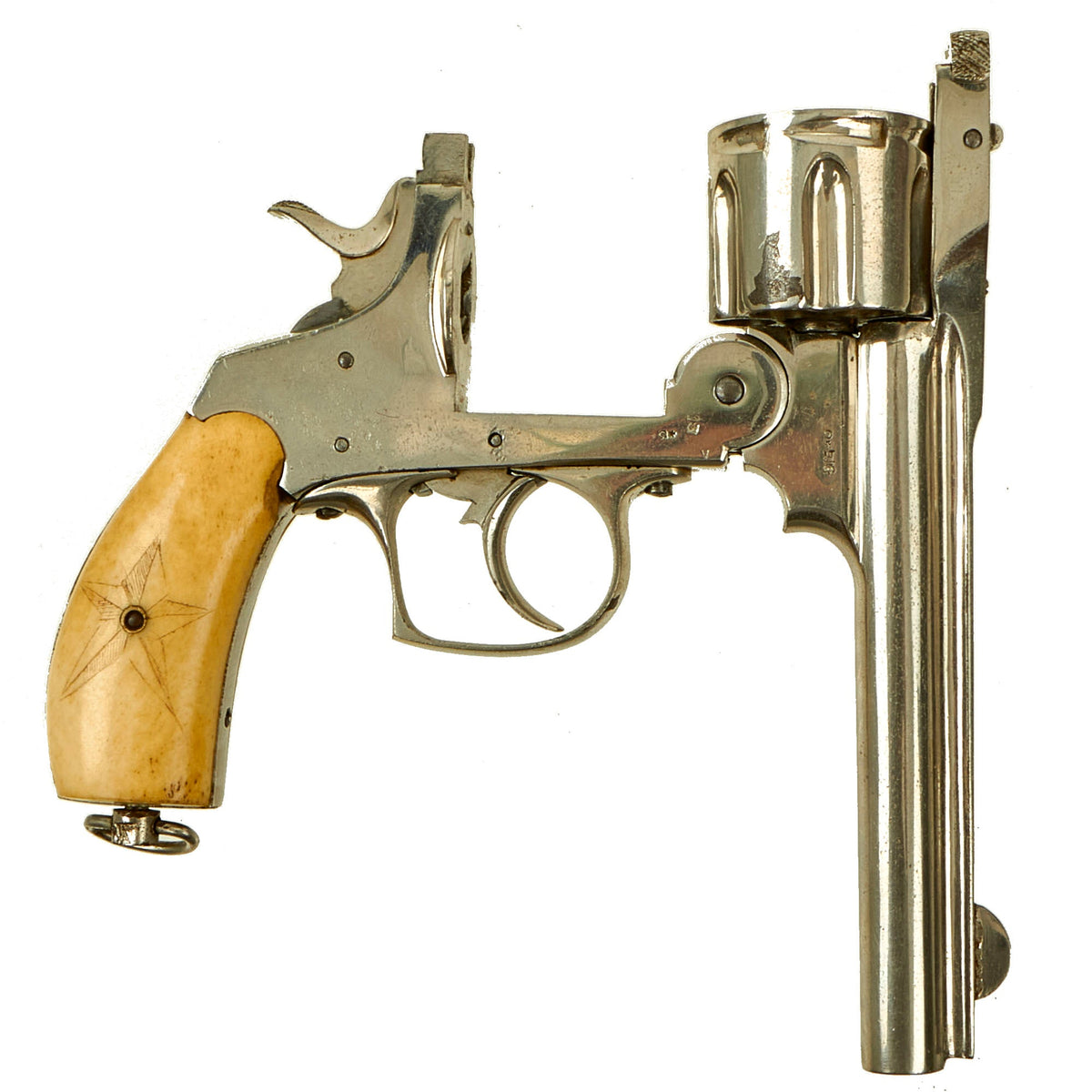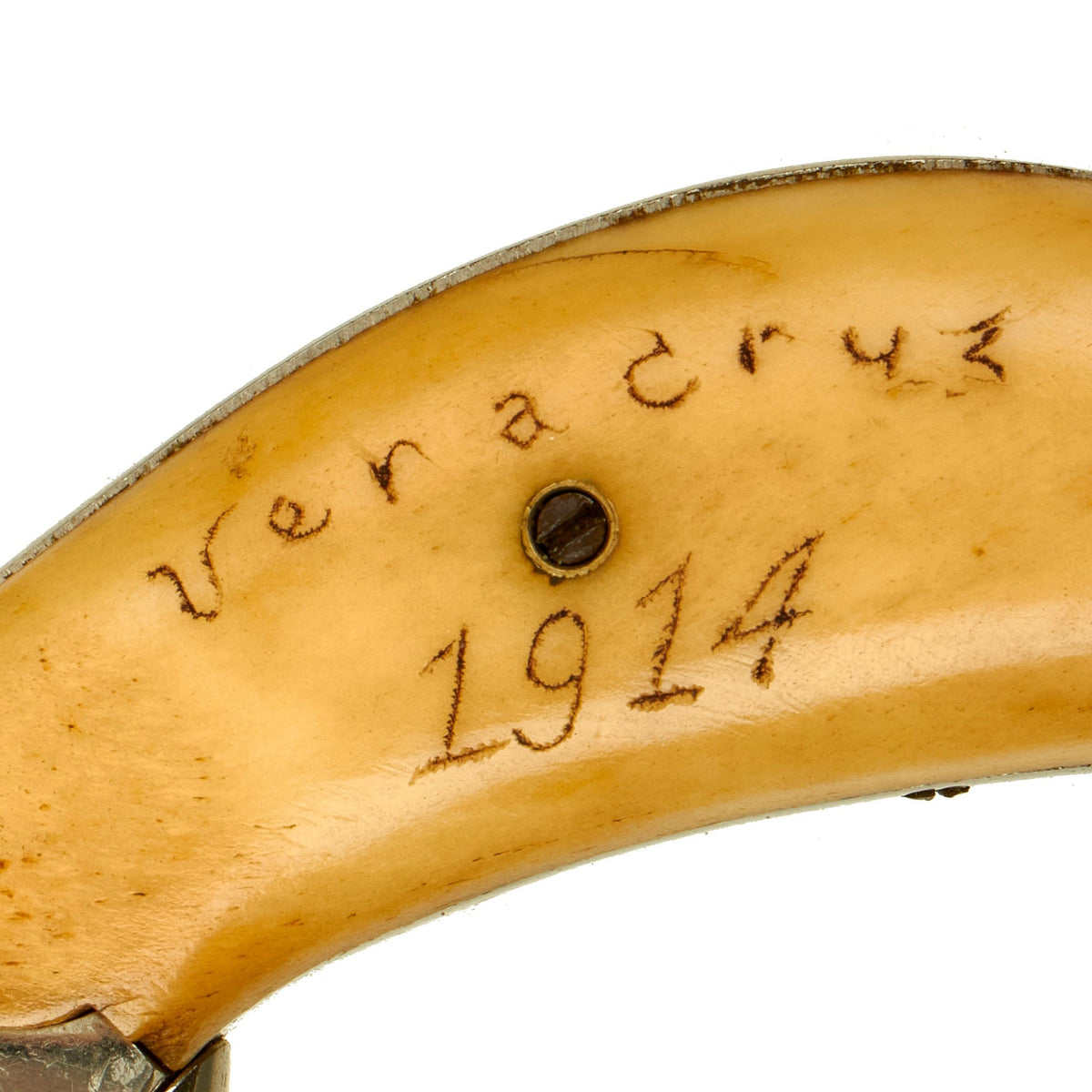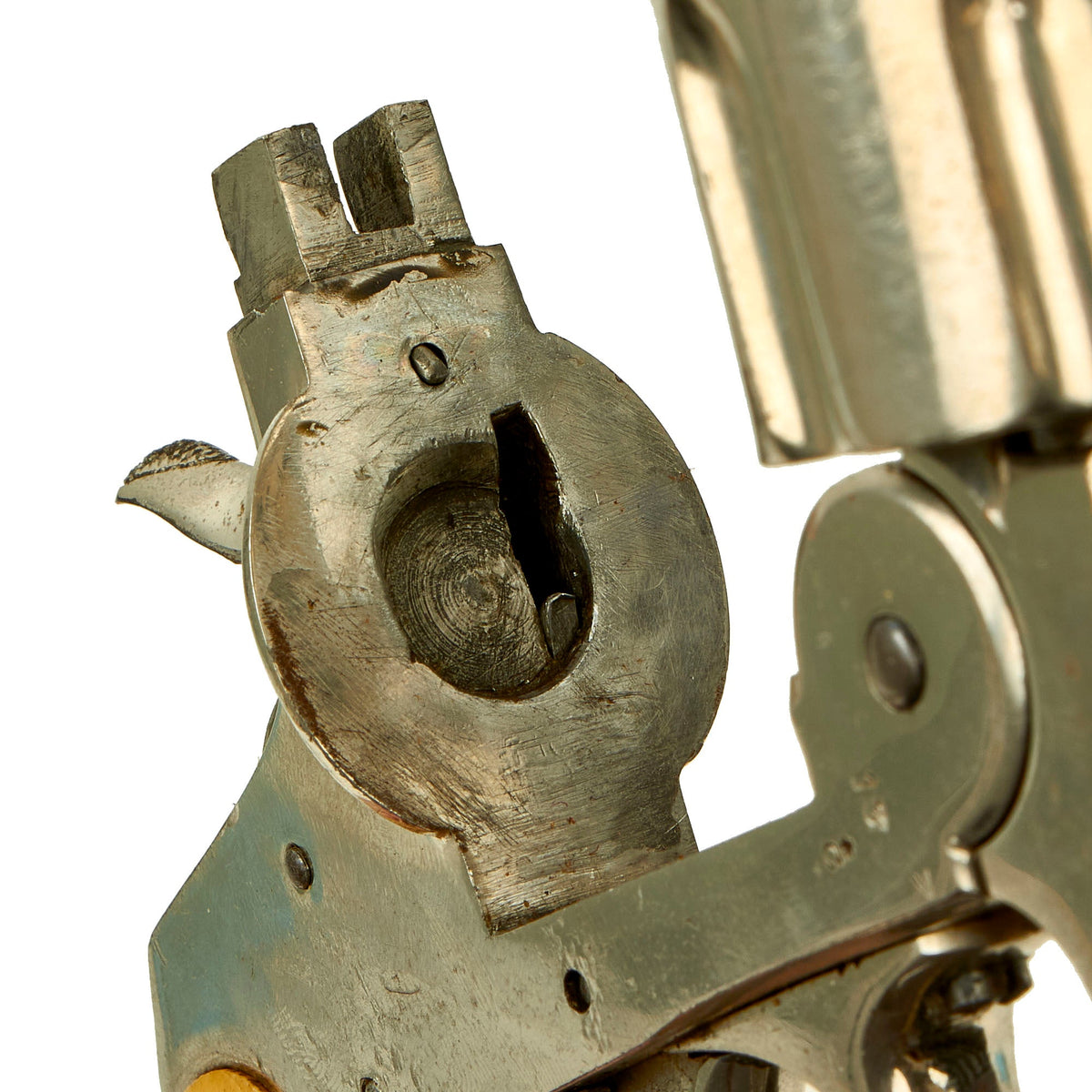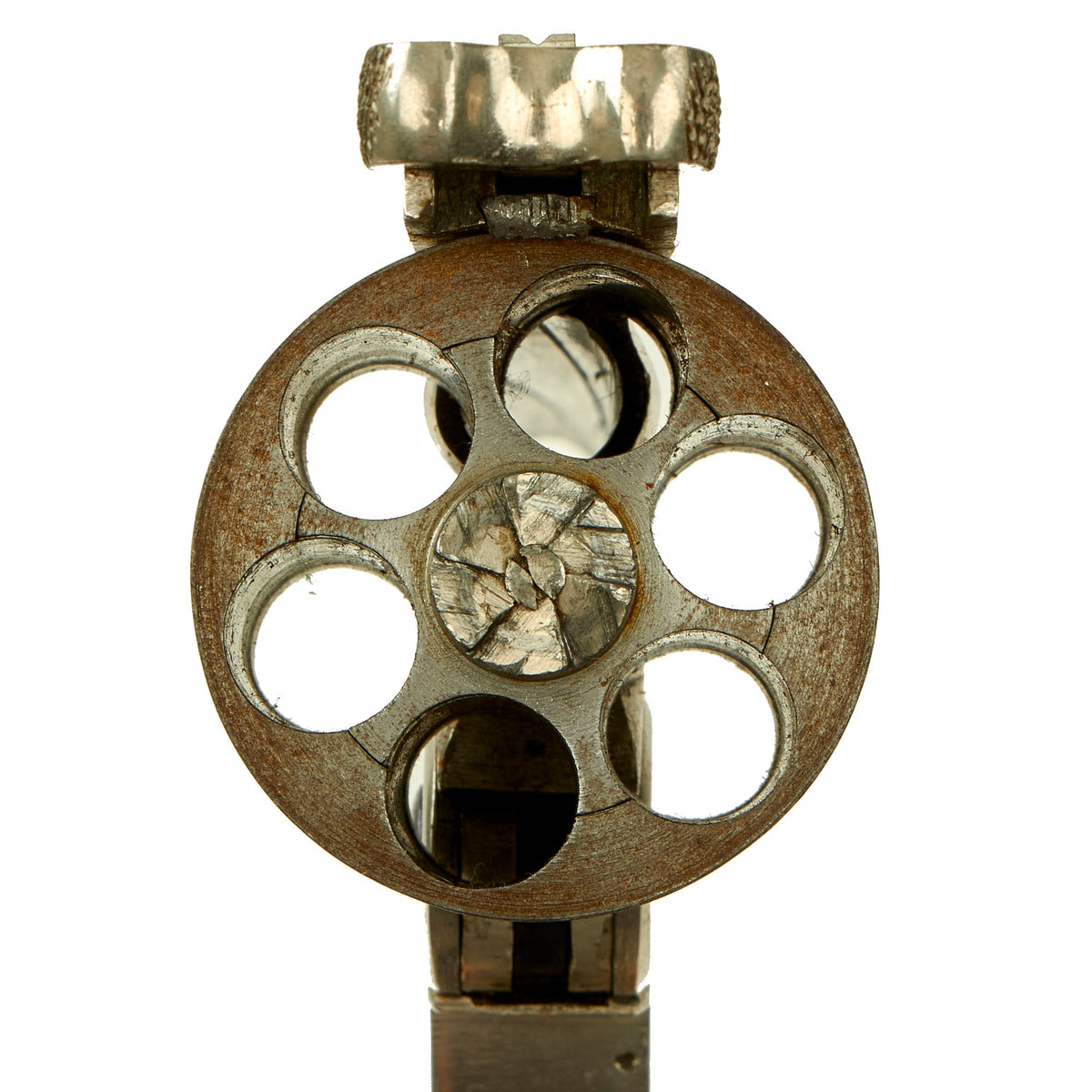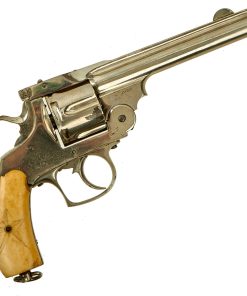Original European Smith & Wesson Model 3 Revolver Double Action Copy with Ivory Grips Original Items
$ 1.395,00 $ 348,75
Original item: Only One Available. Here we have a very nice Nickel-plated European made Copy of the Classic Smith & Wesson “Russian” Model 3 Revolver, with some great aged ivory grips. The original major international customer for Smith & Wesson’s Model 3 design was the Russian government, who ordered many under contract in .44 Russian Caliber. In 1870/71 General Alexander Gorloff of the Imperial Russian Embassy had visited Smith & Wesson, and placed an order for 41,000 units. In 1872 Grand Duke Alexandrovich also visited the factory to great accolades, resulting over the following years the Imperial Russian Army ordering over 130,000 of this Model Revolver in total.
However, the Russian government was across the globe from Smith & Wesson, which meant additional cost and time waiting for revolvers. Shipments could also be disrupted by weather, war, or other issues. This also meant that it was unlikely S&W would be able to enforce litigation, so Russia started contracting European companies to produce the design. In addition, S&W had also angered the Russians by selling arms to Turkey and Japan, enemies of Imperial Russia. So, in 1876 the Russians decided to move No. 3 Russian revolver production from S&W in America to Ludwig Loewe in Berlin. With news of this spreading throughout Europe, other makers looked to grab a portion of the Russian contract market, so various companies across the continent started producing their own copies, which were sold domestically if they were unable catch Russia’s interest.
We believe this is one result of the popularity of the design, possibly copied from the Belgian double action design that came about in the late 1880s. There are no country specific markings on it, though there are some proof marks on the right side below the barrel: CROWN / R and STAR / C, which may help to identify it. We rather suspect it may be Spanish made. Additionally, it is in DOUBLE action, while the original model 3 revolvers were single action only. We believe that is chambered in .44 Russian, however we have not been able to verify this.
The grips also have a very interesting marking scratched into the left side: VERACRUZ / 1914. This seems to reference The Ypiranga Incident, which occurred on April 21, 1914, at the port of Veracruz in Mexico during the Mexican Revolution. The SS Ypiranga was a German steamer commissioned to transport arms and munitions to the Mexican federal government under Victoriano Huerta. The United States however had imposed an arms embargo, which led to the vessel being impounded, and subsequently caused an international incident. The marking on the grip indicates that this revolver may have been part of the shipment. Though well obsolete by the time period, it was very common for older arms such as this to be sent, as they were far cheaper than currently produced examples.
There are also some that feel that the shipment may have been partly intended to woo Mexico to the German side, as rising tensions in Europe and interlocking alliances had already set the state for the outbreak of World War I. Definitely an interesting revolver here with some fantastic research potential!
The revolver is in very good condition, showing only minor signs of use. The nickel plate is retained very well, probably at over 95%, with some scratching and swirls as to be expected. There is also some flaking on two chambers of the cylinder. The grips have a lovely aged look, having faded to a great off white color, and show clear grain on the bottom of the grips. There is the previously mentioned inscription on the left grip, and a star carved on the right. The bore is in very good condition, showing crisp lands and grooves with a mostly bright finish. There is just a bit of fouling and oxidation, and little sign of any real use. The frame brakes open correctly, and the ejector presents, snapping back into place once it is open further.
The revolver functions well in both single and double action, with no real faults to note. It does however have wobble in the lock up, as the cylinder has both end play and side play mechanically.
Despite the great production, “Russian Model” revolvers are very rare and hard to find today, even the copies made in Europe. A very interesting Belgian made DOUBLE ACTION example, completely honest, ready for display!
Specifications:
Years of Manufacture: circa 1880-1890
Caliber: .44 Russian???
Ammunition Type: Centerfire Cartridge
Barrel Length: 5 1/2 inches
Overall Length: 10 1/4 inches
Action: Double / Single Action
Feed System: 6 Shot Revolver
History of the Smith & Wesson Model 3
The Smith & Wesson Model 3 was a single-action, cartridge-firing, top-break revolver produced by Smith & Wesson from circa 1870 to 1915.
It was produced in several variations and sub-variations, including both the “Russian Model”, so named because it was supplied to the military of the Russian Empire (41,000 No. 3’s were ordered in .44 caliber by the Imperial Russian Army in 1871), and the “Schofield” model, named after Major George W. Schofield, who made his own modifications to the Model 3 to meet his perceptions of the Cavalry’s needs. Smith & Wesson incorporated these modifications into an 1875 design they named after the Major, planning to obtain significant military contracts for the new revolver.
The S&W Model 3 was originally chambered for the .44 S&W American and .44 Russian cartridges, and typically did not have the cartridge information stamped on the gun (as is standard practice for most commercial firearms). Model 3 revolvers were later produced in an assortment of calibers, including .44 Henry Rimfire, .44-40, .32-44, .38-44, and .45 Schofield. The design would influence the smaller S&W .38 Single Action that is retroactively referred to as the Model 2.
Fast Shipping with Professional Packaging
Thanks to our longstanding association with UPS FedEx DHL, and other major international carriers, we are able to provide a range of shipping options. Our warehouse staff is expertly trained and will wrap your products according to our exact and precise specifications. Prior to shipping, your goods will be thoroughly examined and securely secured. We ship to thousands clients each day across multiple countries. This shows how we're dedicated to be the largest retailer on the internet. Warehouses and distribution centres can be located throughout Europe as well as the USA.
Note: Orders with more than one item will be assigned a processing date depending on the item.
Before shipping before shipping, we'll conduct a thorough inspection of the items you have ordered. Today, the majority of orders will be delivered within 48 hours. The delivery time will be between 3-7 days.
Returns
The stock is dynamic and we cannot completely manage it because multiple stakeholders are involved, including our factory and warehouse. So the actual stock may alter at any time. It's possible that you may not receive your order once the order has been made.
Our policy is valid for a period of 30 days. If you don't receive the product within 30 days, we are not able to issue a refund or an exchange.
You can only return an item if it is unused and in the same state as the day you received it. You must have the item in its original packaging.
Related products
Uncategorized
Uncategorized
Uncategorized
Uncategorized
Uncategorized
Armoured Fighting Vehicles of the World: AFVs of World War One (Hardcover Book) New Made Items
Uncategorized
Uncategorized
Uncategorized
Uncategorized
Uncategorized
Uncategorized
Uncategorized
Uncategorized
Uncategorized
Uncategorized
Uncategorized
Uncategorized
Uncategorized
Uncategorized
Armored Burgonet Helmet & Polearm from Scottish Castle Leith Hall Circa 1700 Original Items
